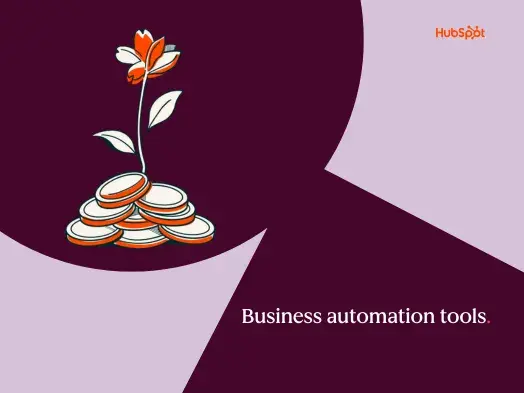Think through every part of your sales process, and identify where you could streamline processes or make your reps’ lives easier with the right technology.
To help you get started, we’ve pulled together a list of the top types of technology that should be in every sales team’s stack. Do you see any gaps in your stack?
Sales Stack Software Comparison
|
Feature |
HubSpot CRM |
Gong |
Zoho Analytics |
LeadGnome |
|
Key Features |
Complete CRM with deal pipeline management, email tracking, automated follow-ups, and sales reporting |
AI-powered call analysis, deal coaching insights, pipeline forecasting, and competitor intelligence |
Advanced sales analytics, custom dashboards, performance tracking, and predictive forecasting |
Automated lead extraction from email signatures, contact discovery, and CRM data enrichment |
|
Pricing |
Free tier available, Starter at $20/month, Professional at $1,600/month, Enterprise at $5,000/month |
Contact for pricing, typically starts around $1,200 per user annually for mid-market plans |
Basic at $22/month for 2 users, Standard at $45/month for 5 users, Premium at $112/month for 15 users, Enterprise at $445/month for 50 users |
Starts at approximately $49/month per user, custom pricing for enterprise solutions |
|
Free Trial |
Yes, free version available permanently |
Yes, typically 14-30 day free trial available |
Yes, 15-day free trial available |
Yes, typically offers free trial period |
Sales Stack
1. CRM
Your CRM is the backbone of your sales team -- and likely your company. CRMs facilitate relationship building with your prospects, speed up your sales cycle, and keep your team organized and goal-focused.
HubSpot Senior Growth Marketer David Ly Khim describes CRMs this way: “CRM, or customer relationship management, is a strategy companies use to track customer relationships from pre- to post-sale. A CRM database is software that stores information on client and prospect interactions with employees.”
Khim continues, “Marketing and Sales touchpoints (including email, phone, website, live chat, and social media) are tracked, providing customer-facing employees with detailed context on a client’s activity and feedback.”
Pretty important, right? That’s why it’s crucial to choose the right one. When selecting a CRM, ask yourself:
- Why are we investing in CRM?
- What operational business challenges do we need to solve?
- What processes do we lack that we should implement?
- How many people do I expect to use the CRM?
- How much customer information do we have?
- What other software do we use that the CRM should integrate with?
- How much budget do I have?
Keep your answers to these questions in mind as you’re vetting potential CRMs and know which are non-negotiable.
Examples of a CRM
- Price: Free
- About: Everything you need to organize, track, and nurture leads. You’ll be able to manage your pipeline, automatically track things like customer interactions over email or social media, sync with Gmail or Outlook to capture every meeting in real time, and make every part of the sales process easier.
- Bonus: Sales Hub integrates seamlessly with HubSpot Smart CRM to provide unified customer data management.
2. Sales Enablement and Automation
Sales used to be incredibly manual. Today, it doesn’t have to be -- more than that, it shouldn’t be. When you’re reviewing each part of your sales process to identify gaps in your sales stack, make sure you’re looking at what processes you can automate. Your CRM might be able to help out with some of this automation.
Before buying a standalone piece of software, check in with your CRM support person to see if there’s a feature you can add to your existing software. Here are a few areas where sales enablement can help your team sell better:
There’s a reason email is the primary medium of communication salespeople us. In fact, 86% of business professionals prefer email to any other type of communication at work. This means it’s prime optimization real estate.
For example, Sales Hub offers email sequences, which allows you to personalize and automate follow-up emails to your prospects. Create email templates within your CRM and customize them to reduce your response time. And track your email performance easily for faster optimization and improvement.
Prospecting/Lead Generation
Prospecting is where most of a rep’s time goes. This makes it another great candidate for automation. Use an email template that has a scheduling link and allow your prospects to opt into a meeting on their own terms.
Live Chat
Is a prospect hanging around your pricing or features page? Engage with them in the moment using direct messaging. Just make sure you use filtering criteria to ensure your chatbots are giving you the most qualified leads possible.
Content
Content is a powerful tool in a salesperson’s arsenal. A well-targeted case study or timely blog post can give a champion prospect what they need to convince a wary executive. To make sure you’re making the most of your best use cases, track usage in your CRM and use that data to identify and reach out to potential case study or blog feature customers.
Reporting
Standardize what KPIs your team will be held to and automate the tracking of those numbers in your CRM or reporting software. Common KPIs are:
- Client acquisition rate
- Number of calls
- Number of emails
- Upsell/Cross-sell rates
- Average deal size
- Conversion rate
Keep track of this information and be ready to pivot or optimize your strategy as the data suggests.
Examples of Sales Enablement Software
- Price:Available upon request
- About: Want visibility into your customer conversations? You might want Gong. This sales enablement software integrates with your CRM to analyze dialer calls and drill down into what separates great reps from the good ones.
- Price:Basic, $22/month; Standard, $45/month; Premium, $112/month; Enterprise, $445/month
- About: Go deep into sales analytics and keep track of KPIs and sales execution optimization like never before. Integrate with your CRM to get handpicked reports that track your sales pipeline, visualize conversion funnels, forecast, and more.
- Price:Based on reply volume
- About: Another one that integrates with your CRM to give you insight into the emails your team is sending. LeadGnome allows you to protect your valuable database of prospect and customer information, use powerful workflows, minimize API calls, and beyond.
3. Scheduling
Kiss back-and-forth emails goodbye and make scheduling meetings a breeze with the right appointment scheduling software or app. Giving prospects the ability to schedule meetings when they want makes it painless to get a meeting on the books -- and less likely you’ll be ghosted. We’ve listed a few good examples below but find a more comprehensive list of appointment scheduling apps here.
Examples of Scheduling Software
- Price: Free
- About: Use with your free HubSpot CRM to invite prospects to schedule meetings on your calendar, sync to your Google or Office 365 calendar, send group meeting links, embed meeting links on your site -- and even set up round-robin meeting links so prospects have the option to speak with a rep who has the most open availability.
- Price:Basic, Free; Premium, $8/month; Pro, $12/month
- About: Connect with up to six of your calendars to automatically check availability. Calendly also has a round-robin scheduling feature and gives users the ability to host multiple invitees at the same event. Calendly also has a cool buffer feature that allows you to add extra time before and after events.
4. Demos
Maybe the perfect pitch doesn’t exist, but the right presenting software can get you pretty close. Make sure it’s user-friendly (i.e., doesn’t require a designer to tweak the spelling on one of your slides), easily shareable, and compatible across devices.
It’s also important to think of presentations outside just the slides you’ll be sharing. Video is a rep’s best friend and pretty great for your company as well -- since they don’t have to have huge travel budgets to get you face to face with prospective clients.
Examples of Demo Software
- Price:Standard, $7/month; Plus, $19/month; Premium, $59/month
- About: Turn your stuffy PowerPoint into a dynamic presentation with Prezi. You’ll get 100 templates, the ability to add movement to your slides, and collaborative functionality that allows up to 10 people to work on your Prezi at once. Plus, Prezi is compatible with PC and Mac desktops as well as iPhones, iPads, and Android devices.
- Pricing:Basic, Free; Pro, $14.99/month/host; Business, $19.99/month/host; Enterprise, $19.99/month/host (minimum of 50 hosts)
- About: Meetings, webinars, conference rooms, phone systems, and cross-platform messaging and file sharing -- Zoom has all your presentation and collaboration needs covered. Share your screen with prospects, enjoy crystal-clear video meetings, and get ready for a seamless presentation experience.
5. Closing/E-Signature
Knowing when someone has received your contract, read it, and signed it can shave valuable time off your sales cycle. Using an e-signature tool allows everyone to sign digitally, so you waste less time waiting for buyers to … well, spend 10 minutes trying to remember how to use their office printer/scanner.
Examples of Closing/E-Signature Software
- Price: eSign Team, $25/month; Business, $49/month per user; Enterprise, available upon request
- About: Create, send, track, and eSign proposals, quotes, and contracts -- all from within your CRM. You’ll save time with custom templates, merge crucial data in your document, and track document progress in real time.
- Price : Personal, $10/month; Standard, $25/month; Business Pro, $40/month; Advanced Solutions available upon request
- About:Integrate with your CRM to electronically sign and manage your agreements and documents. DocuSign takes security seriously, so you can be sure all of your documents are being “handled” confidentially.
6. Team Communication
Most of this list has been focused around your communication with the customer -- which is how it should be. But it’s important not to forget technology that streamlines your communication with coworkers.
It’s no secret most salespeople live in their inbox, but there are tools that can make communication, knowledge sharing, and competitive or objection analysis much easier among teams.
Examples of Team Communication Software
- Price:Free; Standard, $6.67/month/active user; Plus, $12.50/month/active user
- About: Slack is a collaboration software divvied up into channels and opportunities for direct messages. Organize your channels by team, project, client, or something else altogether. Start threads within those channels to take a conversation further. Slack also offers integrated file sharing, voice or video call capability, and CRM integration that will turn your Slack conversations into HubSpot tasks and notifications.
Your tech stack should be as unique as your business. Analyze each part of your sales cycle to define what technology you need to increase performance and boost revenue. For more, check out our Ultimate Guide to Sales Automation.
Sales Automation


 The result of meeting the buyer where they are -- with an approach tailored to their needs -- is that that prospect moves from stranger to opportunity and finally customer in a frictionless way.
The result of meeting the buyer where they are -- with an approach tailored to their needs -- is that that prospect moves from stranger to opportunity and finally customer in a frictionless way.


![How to Create Successful Email Drip Campaigns [Examples + Best Practices]](https://53.fs1.hubspotusercontent-na1.net/hubfs/53/71_Drip%20Campaign%20Emails.png)




.jpg)

